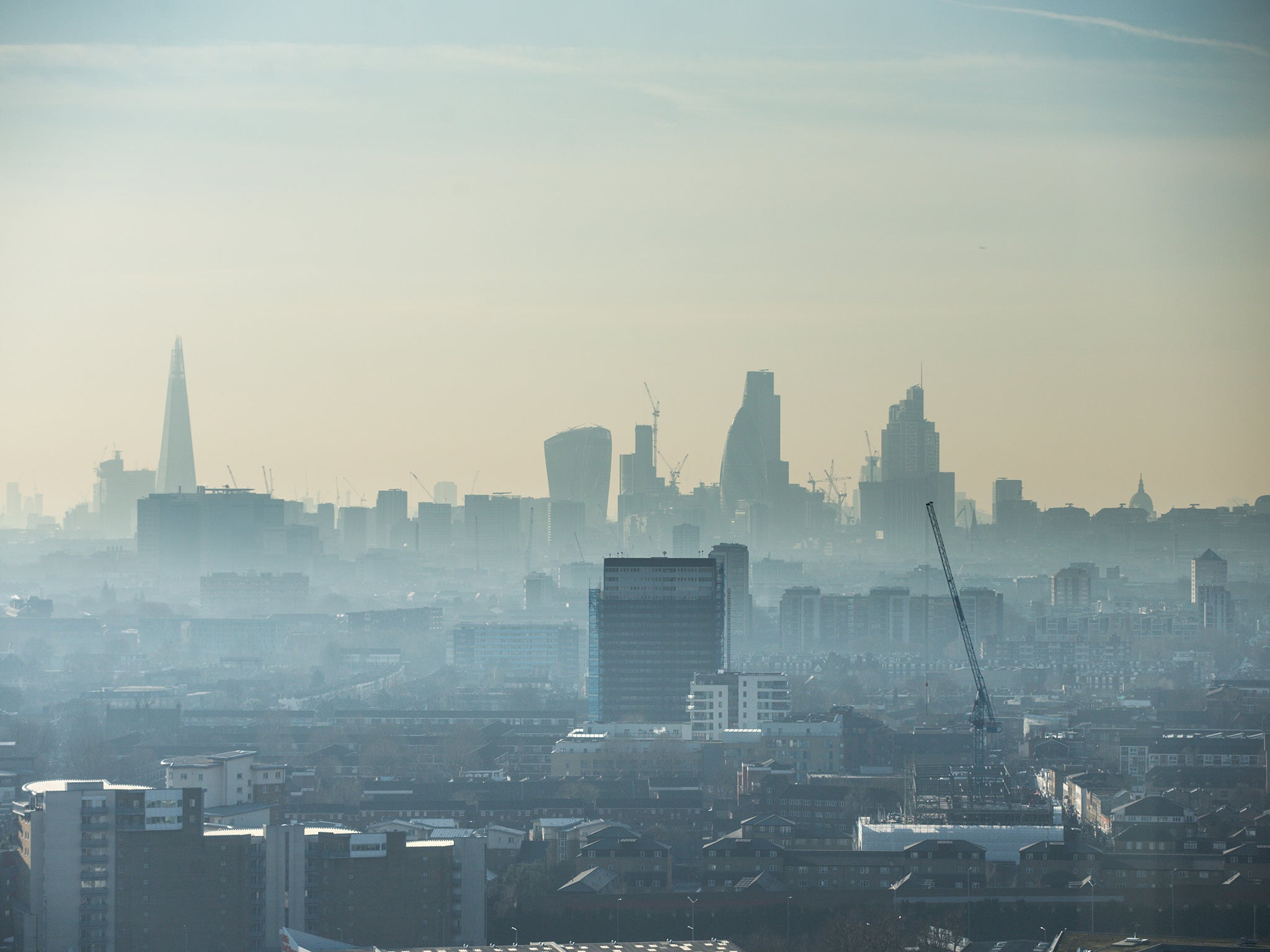Air pollution: Low emission zones not preventing stunted lung growth in London children
'The government cannot be allowed to dismiss the evidence, air pollution is damaging our children's health'

Your support helps us to tell the story
From reproductive rights to climate change to Big Tech, The Independent is on the ground when the story is developing. Whether it's investigating the financials of Elon Musk's pro-Trump PAC or producing our latest documentary, 'The A Word', which shines a light on the American women fighting for reproductive rights, we know how important it is to parse out the facts from the messaging.
At such a critical moment in US history, we need reporters on the ground. Your donation allows us to keep sending journalists to speak to both sides of the story.
The Independent is trusted by Americans across the entire political spectrum. And unlike many other quality news outlets, we choose not to lock Americans out of our reporting and analysis with paywalls. We believe quality journalism should be available to everyone, paid for by those who can afford it.
Your support makes all the difference.Children in London are growing up with smaller lungs and asthma due to toxic air pollution, despite efforts to cut fumes from the city’s traffic.
A study of over 2,000 young people living in the capital found that while low emission zones designed to keep high-polluting cars away have slightly improved air quality, deeper cuts are needed to improve children’s health.
Experts said the findings showed more ambitious measures are needed to tackle Britain’s air pollution crisis. They added that the ultra-low emission zone launching next year is a step in the right direction.
Outdoor air pollution from cars and other sources kills four million people every year, and children are particularly susceptible to its effects.
"We are raising a generation of children reaching adulthood with stunted lung capacity,” said Professor Chris Griffiths from Queen Mary University of London, one of the study’s authors.
He also blamed the car industry and a government “which continues to fail to act decisively to ensure towns and cities cut traffic”.
Low emission zones restrict or penalise vehicles driving into parts of the city in an effort to discourage their use, and London introduced the world’s largest one a decade ago.
The research, published in The Lancet Public Health journal, is one of the first efforts to understand whether this strategy has had any impact on Londoners’ health.
Scientists enrolled eight and nine year-olds from Tower Hamlets, Hackney, Greenwich and the City of London, all of which are failing to meet current European Union nitrogen dioxide pollution limits.
They monitored the children’s health over the five years, covering the period when the low emission zone was introduced, and found that those exposed to air pollution lost about 5 per cent of their lung capacity.
Even though nitrogen dioxide levels fell thanks to the zones, there was no accompanying fall in lung conditions among the children.
London parent Alice De Ville said she was "extremely worried” about what the city’s air was doing to her sons’ lungs.
“The government cannot be allowed to dismiss the evidence, air pollution is damaging our children's health,” she said.
The researchers behind the study said their results showed the importance of evidence-based decision making, and provided further support for the ultra-low emission zone that will see even tighter restrictions placed on vehicles entering the city.
"This new study reveals the terrible legacy of successive governments' failure to act over illegal levels of air pollution,” said Andrea Lee, senior campaigner for ClientEarth, the environmental lawyers who have successfully sued the government three times over the UK’s illegal air pollution.
“The ultra-low emission zone in London will be welcome when it comes in next spring but action is also needed at a national level.”
Shirley Rodrigues, deputy London mayor for environment and energy, said the report was “further evidence of how pollution blights young Londoners’ lives”.
She said besides low emissions zones, there was a need for the government to implement a diesel scrappage scheme to take the most polluting vehicles off the road.
London is not the only part of the UK with dangerous air pollution, with one 2017 report by the World Health Organisation concluding over 40 British cities had air too dangerous to breathe.
Responding to the report, a spokesperson from the Department for Environment, Food and Rural Affairs said: “While air quality in the UK has improved significantly since 2010, we understand the risk it continues to pose to human health, and realise more needs to be done. For that reason, we have introduced a £3.5bn plan to reduce harmful emissions and an ambitious Clean Air Strategy which has been welcomed by the World Health Organisation.
“We will soon be going even further with new legislation to give local government new powers to take action in areas with a pollution problem.”
Join our commenting forum
Join thought-provoking conversations, follow other Independent readers and see their replies
Comments